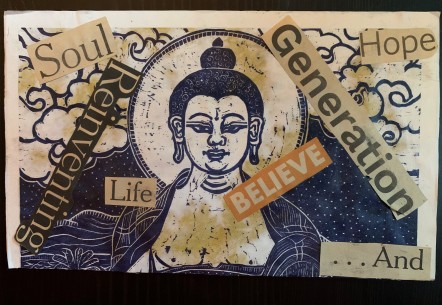What kind of ancestor do you want to become?
To ponder such a question invites us to explore the realm of legacy, Gero-Punk style.
+++

+++
Legacy can transcend the bounds of time-place-space.
Legacy goes in all directions, is deeply, fundamentally relational, and encompasses much more than mere material resources.
By “all directions,” I mean that legacy is trans- and inter-generational and not exclusively about transmission of something important to younger generations from older generations. Legacy can be transmitted in the other direction, as well, and in all directions at once.
By “fundamentally relational,” I mean that the creation of legacy happens in the context of cultivated, on-going relationships (And between both the “living” and the “no-longer-living”; that is, a member of a legacy-creating relationship may no longer be alive but still very present and influential to others, such as the role my Gramma continues to play in my life).
Legacy is an expression of deep, consequential and reverberating connections between humans (and other creatures as well).
A larger-mind view of legacy is that it is about intentionally creating the causes and conditions necessary for a vital present and future life for not only our family members and friends and other closest-in people, but for all living creatures. As such, members of multiple generations traveling through the life course simultaneously join together to pass-around (rather than pass-down) resources. These resources certainly may be material in the traditional sense of legacy – money, property, possessions – but are, importantly and primarily, ethical, intellectual, spiritual and emotional.
Legacy may entail carrying on the traditions and practices of another person who is no longer living (or perhaps whom we never met in person but through the stories told about them), such as by adopting — embodying and enacting – their quintessential characteristics or commitments: a particular habit-of-speech, a jaunty hat they always wore, or their singular role in a larger system. In this way, the special person continues to exist but in a different form, and we are forever changed – and changing — because of our relationship with them.
Lastly, a larger trans-personal view of legacy encompasses non-human creatures, the planet, and our universe, as well as future humans whom we’ll not know because we will no longer be living, but for whom we care nonetheless (and who may someday in the future learn and care about us, their ancestors, as well.).
+++
What kind of ancestor do you want to become?
Why not start practicing now?



